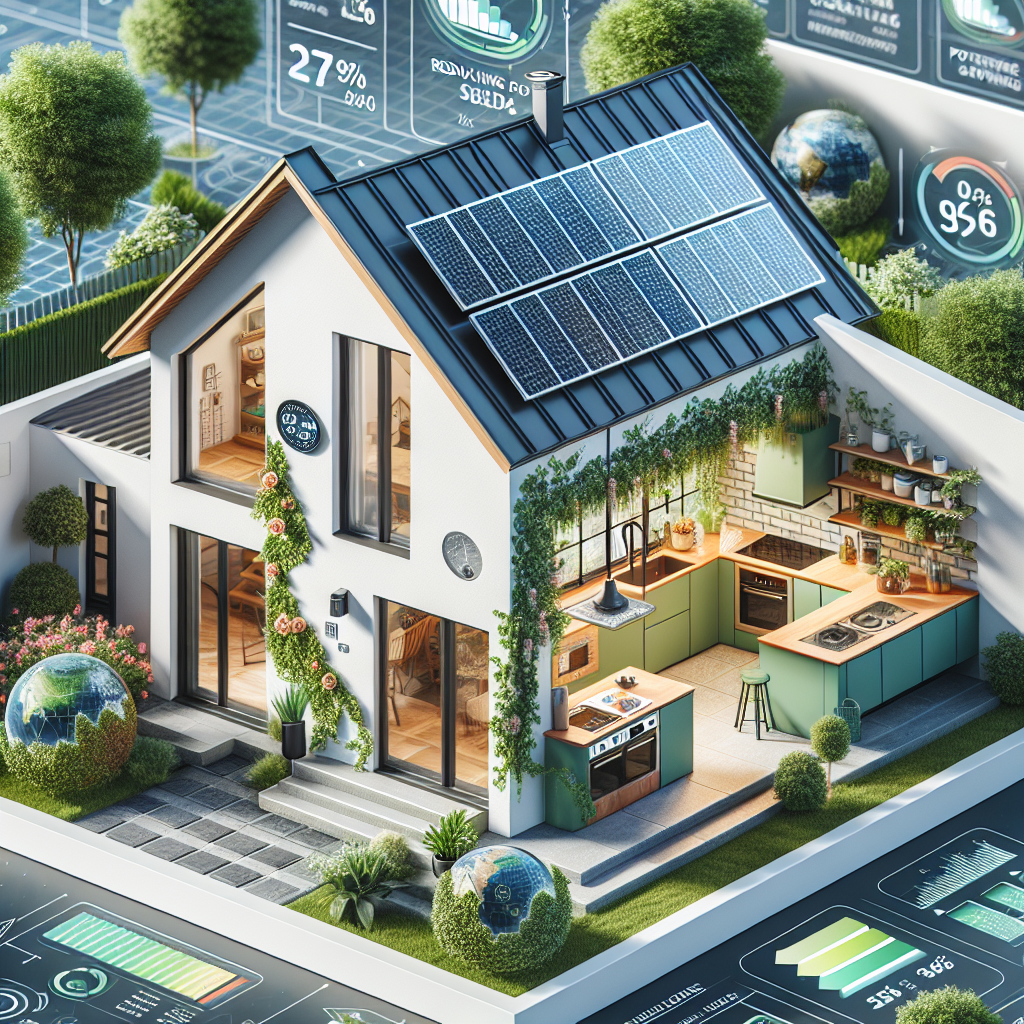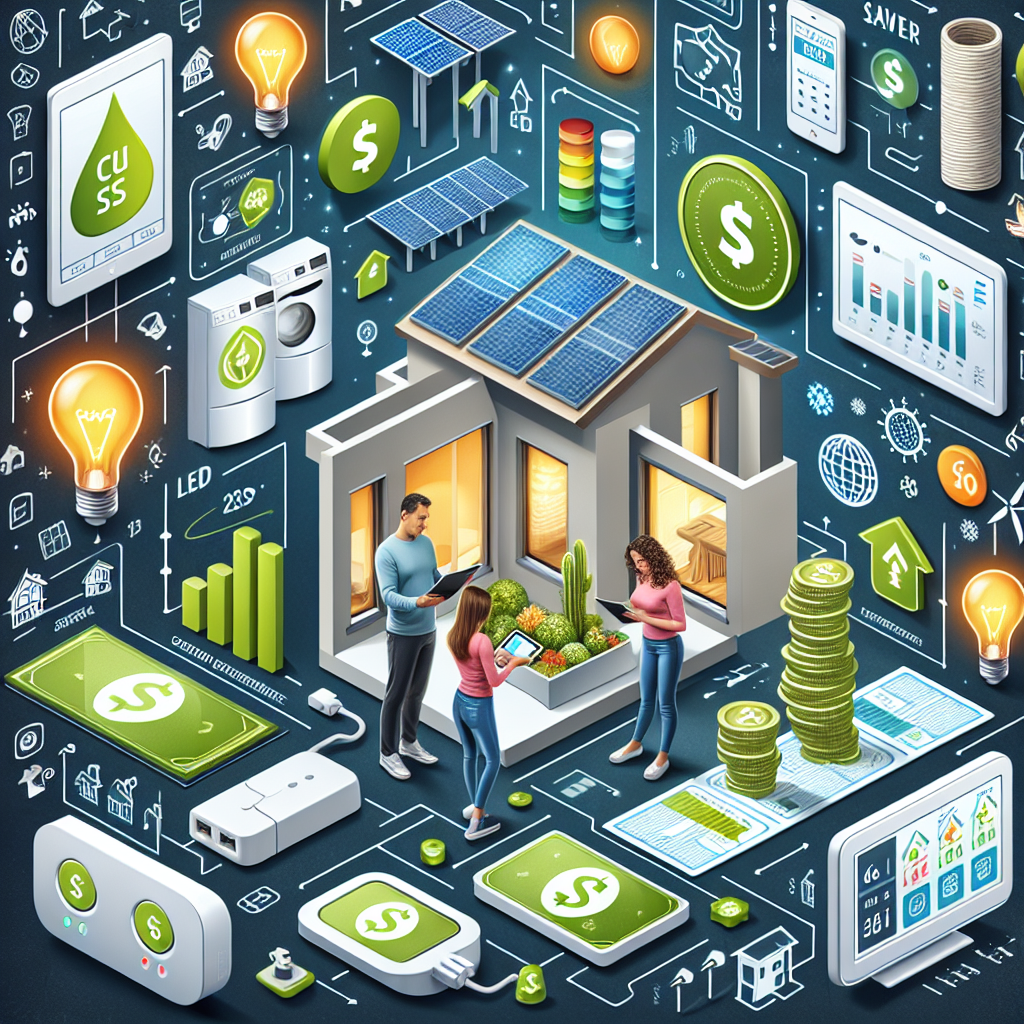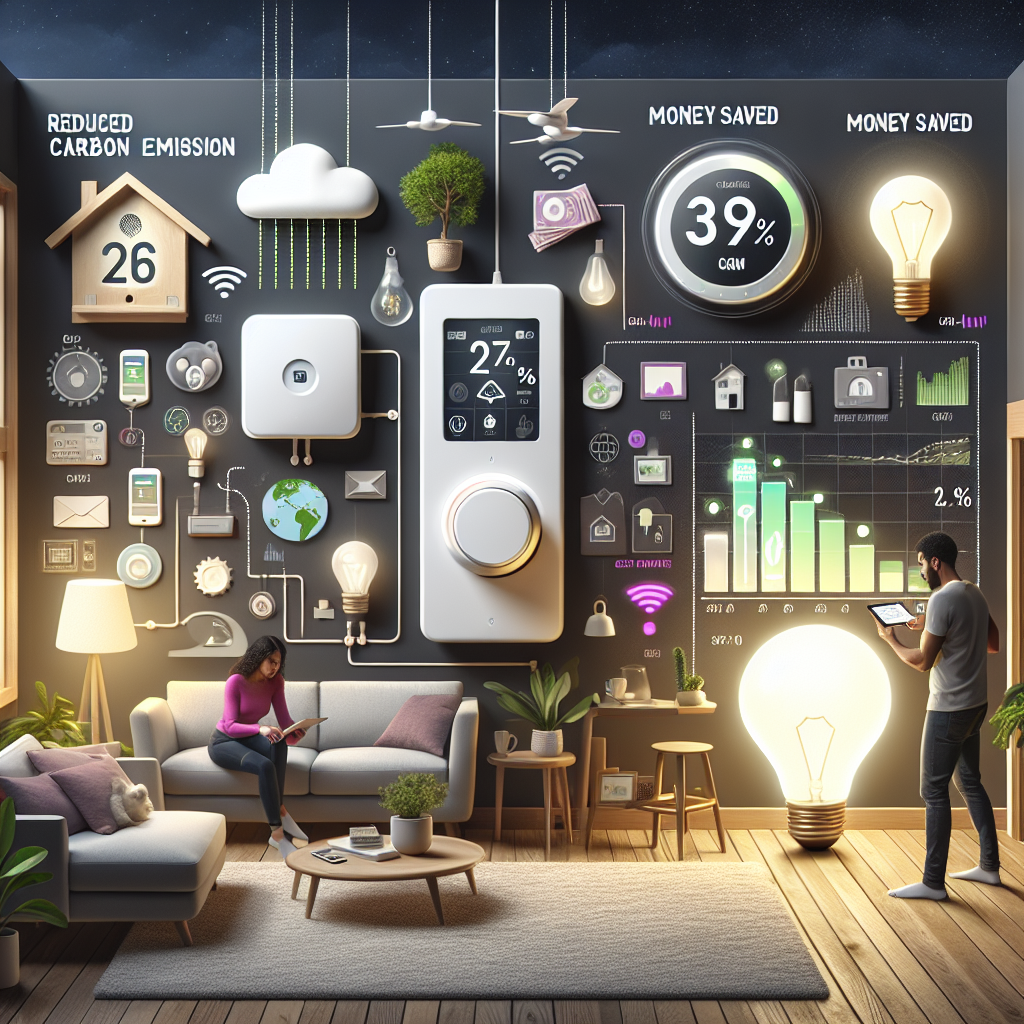In today’s world, with a growing focus on sustainability and environmental stewardship, smart home energy-saving strategies have become more important than ever. By implementing innovative technologies and simple changes in our daily routines, we can significantly reduce our carbon footprint and save money on energy bills. From smart thermostats that learn your habits to energy-efficient appliances and lighting, there are countless ways to make your home more eco-friendly. Join the movement towards a greener future by exploring the exciting world of smart home energy-saving strategies – where you can make a positive impact on the planet while also benefiting your wallet.
Understanding Smart Home Energy Efficiency

What is Smart Home Technology?
Smart home technology refers to the integration of devices and systems within a household that are connected to a network, allowing for remote monitoring and control. These devices can include thermostats, lighting systems, appliances, and security systems that can be automated and controlled through a smartphone or computer.
How Does Smart Home Technology Help Save Energy?
- Energy Monitoring: Smart home technology allows homeowners to track their energy usage in real-time, providing insights into which devices are consuming the most energy.
- Automated Controls: By setting schedules and preferences, smart home devices can optimize energy usage by adjusting settings based on occupancy, time of day, or external factors like weather conditions.
- Remote Access: With the ability to control devices remotely, homeowners can ensure that energy-consuming appliances are turned off when not in use, even when away from home.
- Integration with Renewable Energy: Smart home systems can be integrated with solar panels or other renewable energy sources to maximize energy efficiency and reduce reliance on traditional power grids.
- Data Analysis: By analyzing energy usage patterns over time, smart home technology can provide recommendations for further energy-saving strategies tailored to the specific needs of the household.
Implementing Energy-Saving Devices in Your Smart Home
In the quest to reduce energy consumption and lower utility bills, incorporating energy-saving devices in your smart home is a crucial step. These devices not only help in minimizing your carbon footprint but also contribute to significant cost savings in the long run. Here are some key energy-saving devices to consider integrating into your smart home:
-
Smart Thermostats: Regulating Temperature for Efficiency
Smart thermostats are innovative devices that enable you to control and adjust the temperature of your home remotely. By programming your heating and cooling systems based on your schedule and preferences, smart thermostats help optimize energy usage. Additionally, some models can learn your habits and adjust settings automatically, further enhancing energy efficiency.
-
Energy-Efficient Lighting Solutions
Upgrading to energy-efficient lighting solutions such as LED bulbs can make a notable difference in your home’s energy consumption. LED bulbs use significantly less energy than traditional incandescent bulbs and have a much longer lifespan. By strategically placing these bulbs throughout your home and utilizing smart lighting controls, you can create well-lit spaces while minimizing electricity usage.
-
Smart Power Strips: Eliminating Vampire Energy Drain
Vampire energy drain, also known as standby power, occurs when electronic devices continue to draw power even when turned off. Smart power strips combat this issue by cutting off power to devices that are not in use. By connecting your appliances and electronics to smart power strips, you can effectively eliminate standby power consumption and reduce wasted energy.
Harnessing the Power of Automation for Energy Conservation
In today’s technologically advanced world, smart home automation offers a myriad of opportunities to enhance energy efficiency and reduce carbon footprint. By integrating automated systems into your household, you can effectively manage energy consumption and optimize the use of appliances and devices.
- Scheduling Appliances and Devices for Optimal Efficiency
Implementing schedules for your appliances and devices can significantly contribute to energy savings. By programming your thermostat to adjust temperatures based on your daily routine, you can avoid unnecessary heating or cooling when no one is home. Similarly, scheduling your dishwasher and laundry machine to run during off-peak hours can lower energy costs and reduce strain on the grid.
- Utilizing Motion Sensors to Control Lighting and Devices
Motion sensors are a valuable tool in minimizing energy wastage by ensuring that lights and devices are only activated when needed. Installing motion sensors in key areas of your home, such as corridors, bathrooms, and outdoor spaces, can automatically turn off lights when no movement is detected. This not only conserves energy but also prolongs the lifespan of light bulbs and reduces electricity bills.
Monitoring and Analyzing Energy Usage in Real-Time
-
Smart Meters: Tracking Energy Consumption
Smart meters are advanced devices that provide real-time data on energy consumption in homes. These meters allow homeowners to monitor their electricity, gas, or water usage with precision. By tracking energy usage patterns throughout the day, week, or month, smart meters offer valuable insights into where energy is being consumed the most. This information enables homeowners to make informed decisions on how to adjust their usage habits to minimize waste and reduce their carbon footprint. -
Energy Monitoring Apps: Identifying Energy Usage Patterns
Energy monitoring apps complement the functionality of smart meters by providing users with user-friendly interfaces to view and analyze their energy consumption data. These apps often offer features such as customizable energy usage reports, real-time alerts for unusual spikes in usage, and tips on how to optimize energy efficiency. By leveraging the insights provided by these apps, homeowners can gain a deeper understanding of their energy consumption habits and implement targeted strategies to save energy and money.

Integrating Renewable Energy Sources into Your Smart Home
Renewable energy sources play a crucial role in reducing carbon footprint and saving money in smart homes. By integrating renewable energy solutions, homeowners can take significant steps towards sustainable living. Two popular options for incorporating renewable energy into smart homes are solar panels and wind turbines.
-
Solar Panels: Generating Clean Energy
Solar panels are a highly effective way to generate clean energy for smart homes. These panels harness sunlight and convert it into electricity through photovoltaic cells. By installing solar panels on the roof or in the yard, homeowners can significantly reduce their reliance on traditional grid electricity. This not only helps in cutting down electricity bills but also decreases the overall carbon emissions associated with conventional energy production. Additionally, excess energy generated by solar panels can be stored in batteries or fed back into the grid through net metering programs, further enhancing energy efficiency and cost savings.
-
Wind Turbines: Harnessing Wind Power for Electricity

Wind turbines are another renewable energy option that can be integrated into smart homes to reduce carbon footprint and save money. These turbines utilize the power of wind to generate electricity, providing a clean and sustainable energy source. While wind turbines are more commonly seen in rural areas or large properties, advancements in technology have made smaller-scale turbines suitable for residential use. By strategically placing wind turbines in areas with consistent wind flow, homeowners can supplement their energy needs and potentially even generate surplus electricity. This surplus energy can be stored or sold back to the grid, offering financial benefits while contributing to a greener environment.
Maximizing Energy Savings Through Behavioral Changes
Implementing behavioral changes in how energy is used in a smart home can significantly contribute to reducing carbon footprint and saving money. By adopting energy-efficient habits and educating family members on the importance of conservation practices, homeowners can make a tangible impact on their overall energy consumption.
-
Utilizing Smart Thermostats: Smart thermostats allow homeowners to control their heating and cooling systems more efficiently. By programming temperature settings based on occupancy patterns and adjusting them remotely, energy waste can be minimized.
-
Managing Lighting Usage: Encouraging the use of natural light during the day and switching to energy-efficient LED bulbs can lead to substantial energy savings. Additionally, installing smart lighting systems that can be controlled and automated can further optimize energy usage.
-
Unplugging Electronics: Many electronic devices continue to consume energy even when turned off. Educating family members about the importance of unplugging devices when not in use can prevent unnecessary energy consumption.
-
Monitoring Water Usage: Implementing water-saving practices, such as fixing leaks promptly, using water-efficient appliances, and taking shorter showers, can reduce both water and energy consumption in a household.
-
Creating Energy-Conscious Routines: Establishing daily routines that prioritize energy conservation, such as turning off lights when leaving a room, adjusting thermostat settings before bedtime, and running appliances during off-peak hours, can lead to significant energy savings over time.
By proactively engaging in these energy-saving behavioral changes, homeowners can not only reduce their carbon footprint but also enjoy long-term cost savings on their energy bills.
FAQs – Smart Home Energy-Saving Strategies: Reducing Your Carbon Footprint and Saving Money
What are some smart home energy-saving strategies I can implement?
There are several smart home energy-saving strategies you can implement to reduce your carbon footprint and save money. These include installing programmable thermostats to control heating and cooling more efficiently, using energy-efficient LED light bulbs, investing in smart appliances that can be controlled remotely to reduce energy consumption, and utilizing smart power strips to cut off power to electronics when not in use.
How can smart home technology help me save energy and money?
Smart home technology can help you save energy and money by allowing you to monitor and control your energy usage more effectively. For example, smart thermostats can learn your heating and cooling preferences and adjust the temperature accordingly to optimize energy usage. Smart lighting systems can be programmed to turn off lights when not needed, reducing electricity consumption. Additionally, smart appliances can be scheduled to run during off-peak hours when energy costs are lower.
Are there any government incentives or rebates available for implementing smart home energy-saving strategies?
Yes, many governments offer incentives and rebates for implementing smart home energy-saving strategies. These incentives can vary depending on your location, but common programs include rebates for purchasing energy-efficient appliances, tax credits for installing solar panels or other renewable energy sources, and grants for upgrading to smart home technology. Be sure to check with your local government or utility provider for available programs in your area.
How can I track my energy usage and determine where I can make improvements in my smart home?
There are several ways you can track your energy usage in a smart home. Many smart home automation systems come with energy monitoring tools that can provide real-time data on your energy consumption. You can also invest in smart plugs or meters that can track the energy usage of specific appliances or devices. By analyzing this data, you can identify areas where you are using excess energy and make adjustments to reduce your overall consumption.